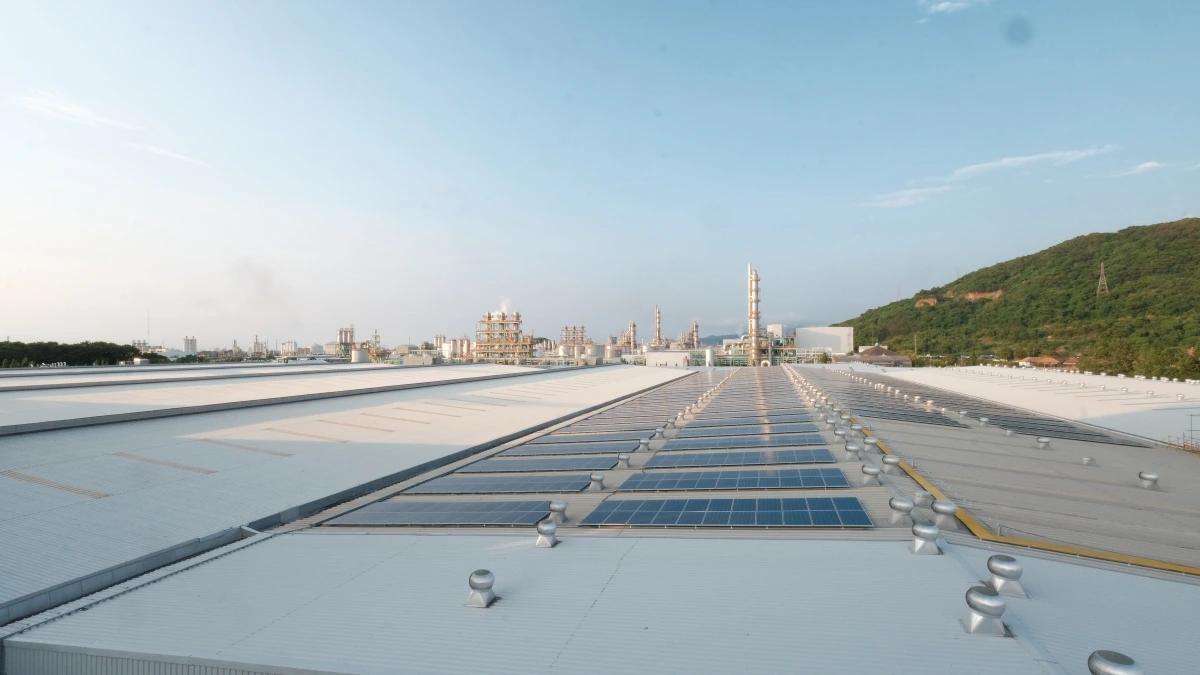
28-10-2025
Alternative Energy Sources: Types, Benefits, & Examples
There are many ways to protect the Earth, from using green technology to alternative energy sources. Alternative energy offers many benefits, such as preventing pollution and protecting natural resources.
Therefore, its use must be gradually increased to improve environmental conditions and reduce the impact of climate change. What are the types of alternative energy that can be used? Check out the following explanation!
What Is Alternative Energy?
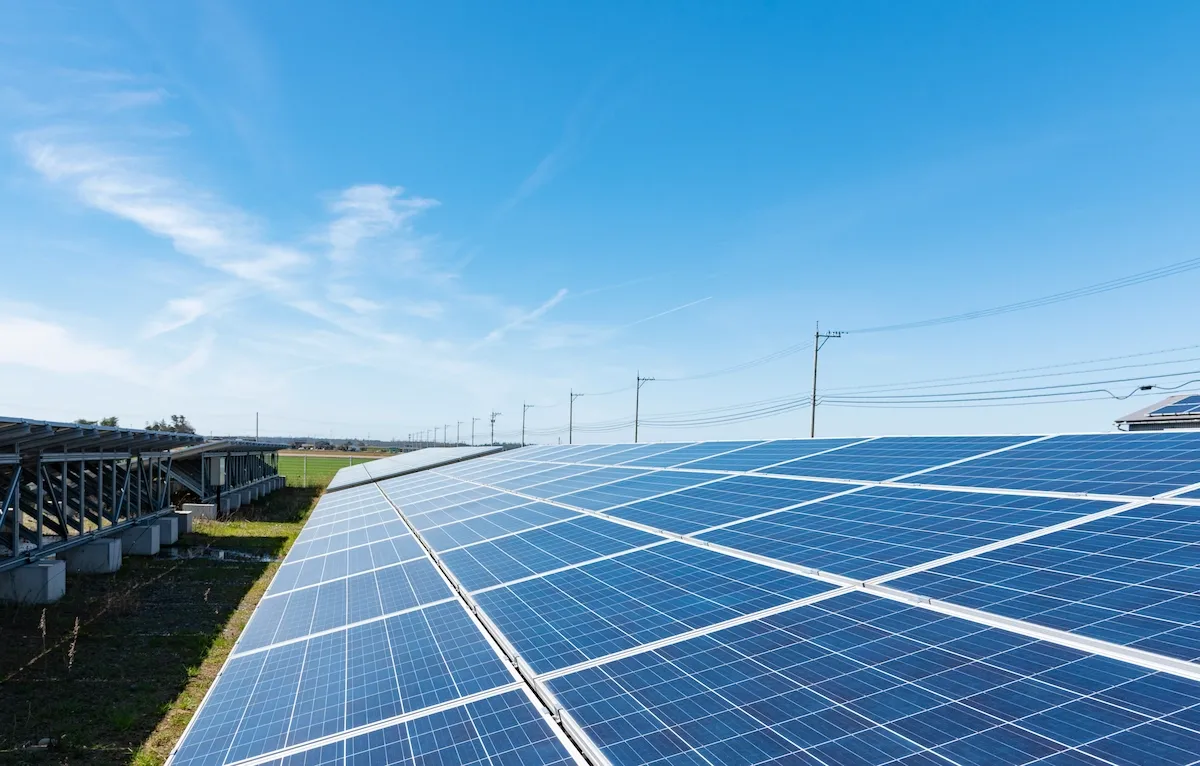
Alternative energy sources are derived from renewable sources and are generally more environmentally friendly. Because they come from renewable sources, these energies can be obtained more easily than non-renewable fossil fuels.
Fossil fuels are obtained from the fossils of living creatures that have been buried in the ground for thousands or even millions of years. These fossils then undergo natural changes until they become petroleum or natural gas. This is what makes fossil fuels non-renewable, as the fossilization process takes millions of years.
Alternative energy sources provide a solution to reduce dependence on fossil fuels and energy sources that produce high carbon emissions. Examples of alternative energy sources include solar, wind, and hydroelectric power.
So, does Indonesia have potential for alternative energy? The Indonesian Ministry of Energy and Mineral Resources states that the country has considerable potential for new and renewable energy, namely 4.80 kWh/m2/day for solar energy, 3 GW for nuclear energy, 50 GW for biomass, and 450 MW for micro-hydro.
As a result, Indonesia can still pursue alternative energy initiatives to reduce its reliance on non-renewable energy sources.
Read also: Renewable Energy: Definitions, Benefits, and Examples
Types of Alternative Energy Sources
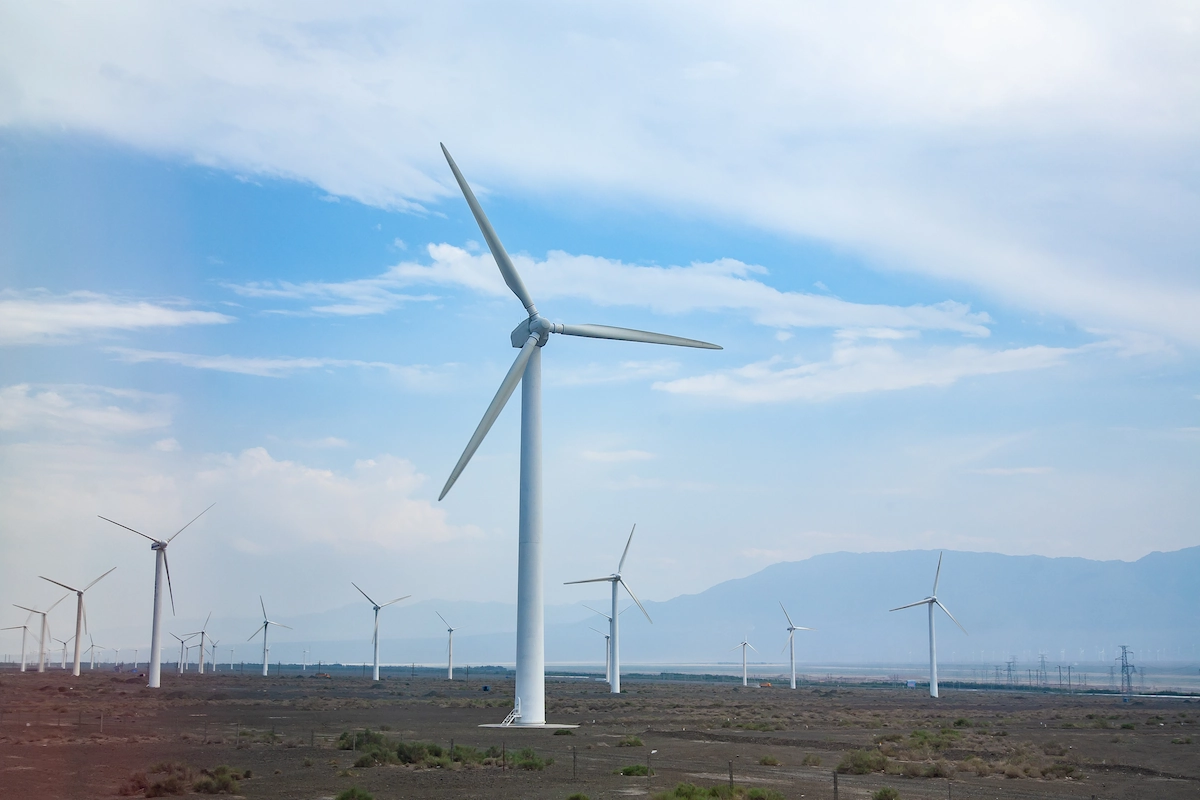
There are several types of alternative energy sources being developed around the world to reduce carbon emissions and other negative impacts on nature, including:
1. Wind Energy
The first type of alternative energy source is wind energy. This energy can be generated by installing wind turbines. The wind will drive the turbine blades, converting their kinetic energy into electricity.
For optimal performance, wind turbines are usually placed in areas with consistent, strong winds, such as highlands.
According to the U.S. Energy Information Administration, areas suitable for installing small wind turbines must have an average wind speed of at least 9 miles per hour or 4.0 meters per second. Meanwhile, for utility-scale turbines, the wind speed must be around 13 miles per hour (5.8 meters per second).
2. Solar Energy
Solar energy is one of the most common alternative energy sources. Usually, this energy source is channeled through solar panels. Solar panels have photovoltaic cells that convert sunlight into electricity.
The electricity generated can be distributed to electronic devices in homes or offices and can be stored in batteries installed alongside the panels.
3. Water Energy
Another type of alternative energy source is water energy. This energy is generated by water turbines installed in dams or along river flows. The flow of water will turn the turbines, generating kinetic energy. Then the kinetic energy will be converted into electricity.
This alternative energy is suitable for implementation in Indonesia because it has many rivers and dams. Examples of rivers used for hydroelectric power plants (PLTA) include the Citarum River, Asahan River, and Cisangkuy River.
4. Geothermal Energy
Geothermal energy comes from the Earth's core. It works by utilizing geothermal heat to heat water. The steam that is formed then rotates turbines and generators. The movement of these turbines generates kinetic energy, which is converted into electrical energy.
5. Bioenergy
Not only do natural resources provide energy, but you can also obtain alternative energy from organic waste. This energy source is called bioenergy. You can process biomass and organic agricultural waste into fuel, heat, or electricity.
6. Ocean Wave Energy
Another alternative energy source is ocean wave energy. The concept behind this energy is that ocean waves will drive turbines connected to generators. Then, the kinetic energy produced will be converted into electrical energy.
Read also: What Is Green Building? Functions, Benefits, and Examples
Benefits of Alternative Energy
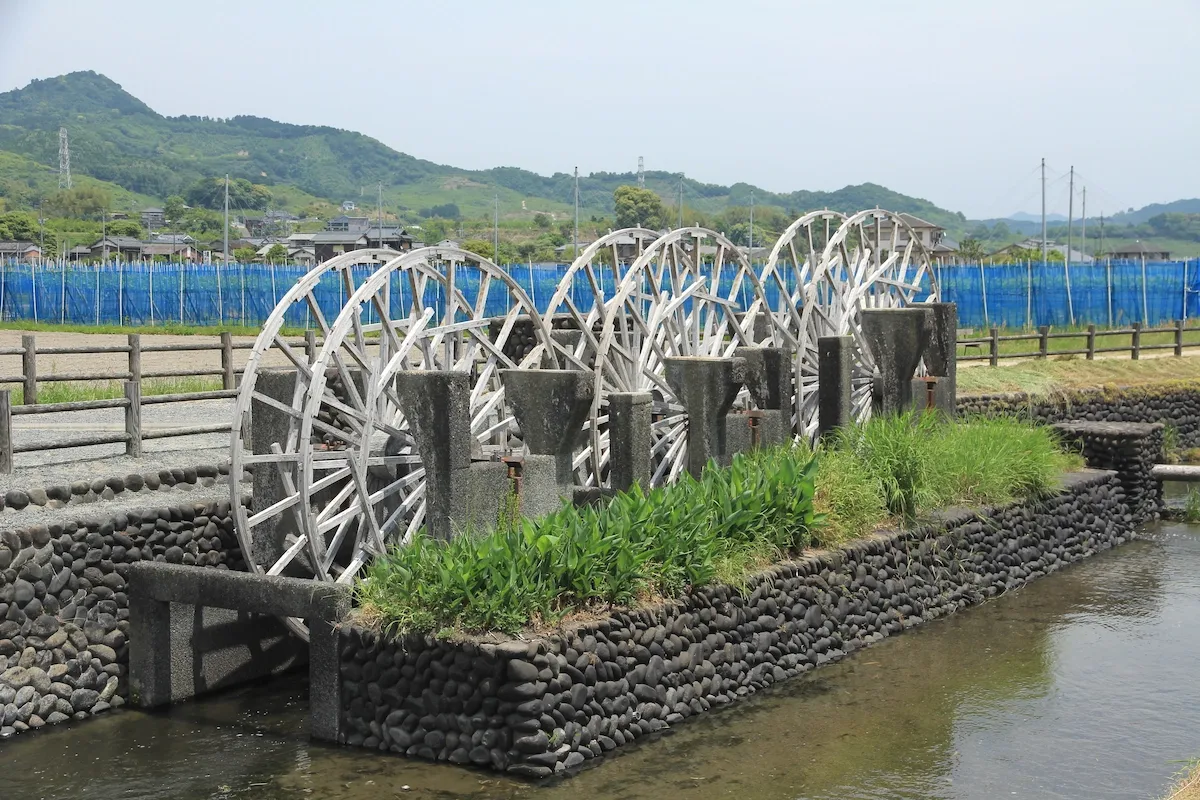
Alternative energy is one of the more environmentally friendly solutions for human survival. The following are the benefits of alternative energy sources:
1. Preventing Air Pollution
The combustion of fossil fuels often produces air pollution that harms the environment and human health. Therefore, alternative energy sources are available to reduce air pollution with processes that make almost no smoke.
2. Reducing Greenhouse Gas Emissions
The use of alternative energy sources can also reduce greenhouse gas emissions because energies such as wind and water do not produce harmful emissions. As a result, the effects of global warming and climate change can be prevented.
The International Atomic Energy Agency explains that using water energy instead of fossil fuels to generate electricity can reduce more than 100 billion tons of carbon dioxide over the last 50 years.
3. Endless Supply
Unlike fossil fuels, which are non-renewable and may eventually run out, alternative energy sources such as wind and solar power are endless and will continue to exist. Furthermore, as long as the Earth still has water, humans will still be able to use it as a power plant.
4. Supporting the Green Economy
The development of power plants using alternative energy sources can create new jobs and other technological innovations, thereby boosting a country's economy.
5. Improving Energy Efficiency
The installation of alternative energy power plants may be costly at first, but their long-term maintenance and operational costs are lower and more stable, thereby supporting energy efficiency.
The reason alternative energy has lower operating costs is that it does not require fuel costs. This means the Leveled Cost of Energy (LCOE) of this energy is comparable to the technology's cost.
Examples of Alternative Energy Sources in Indonesia
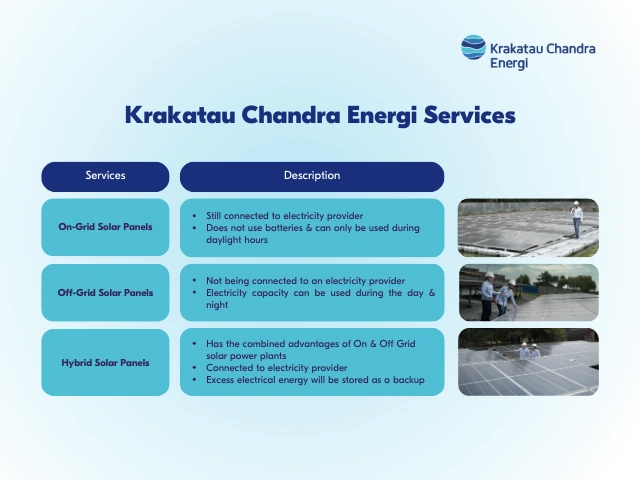
One of the most commonly implemented alternative energy sources in Indonesia is solar panels. This technology continues to develop, resulting in various types of solar panels available to suit different needs.
Solar panels can be installed on building roofs, on large areas designated for solar panels, or even on the surface of reservoirs using solar-floater technology. In Indonesia, a subsidiary of the Chandra Asri Group, Krakatau Chandra Energi, is developing solar panels.
This company provides on-grid, off-grid, and hybrid solar panels. Obviously, you can choose the solar panels that suit your company's needs.
This concludes the information about alternative energy sources, from their definitions to examples of their use. The use of alternative energy is crucial to reducing the impact of global warming, which is increasingly damaging the planet's climate and ecosystems.
If your company needs solar panels, be sure to use Krakatau Chandra Energi's services!
Read also: What Is Clean Energy? Benefits, Types, and Examples